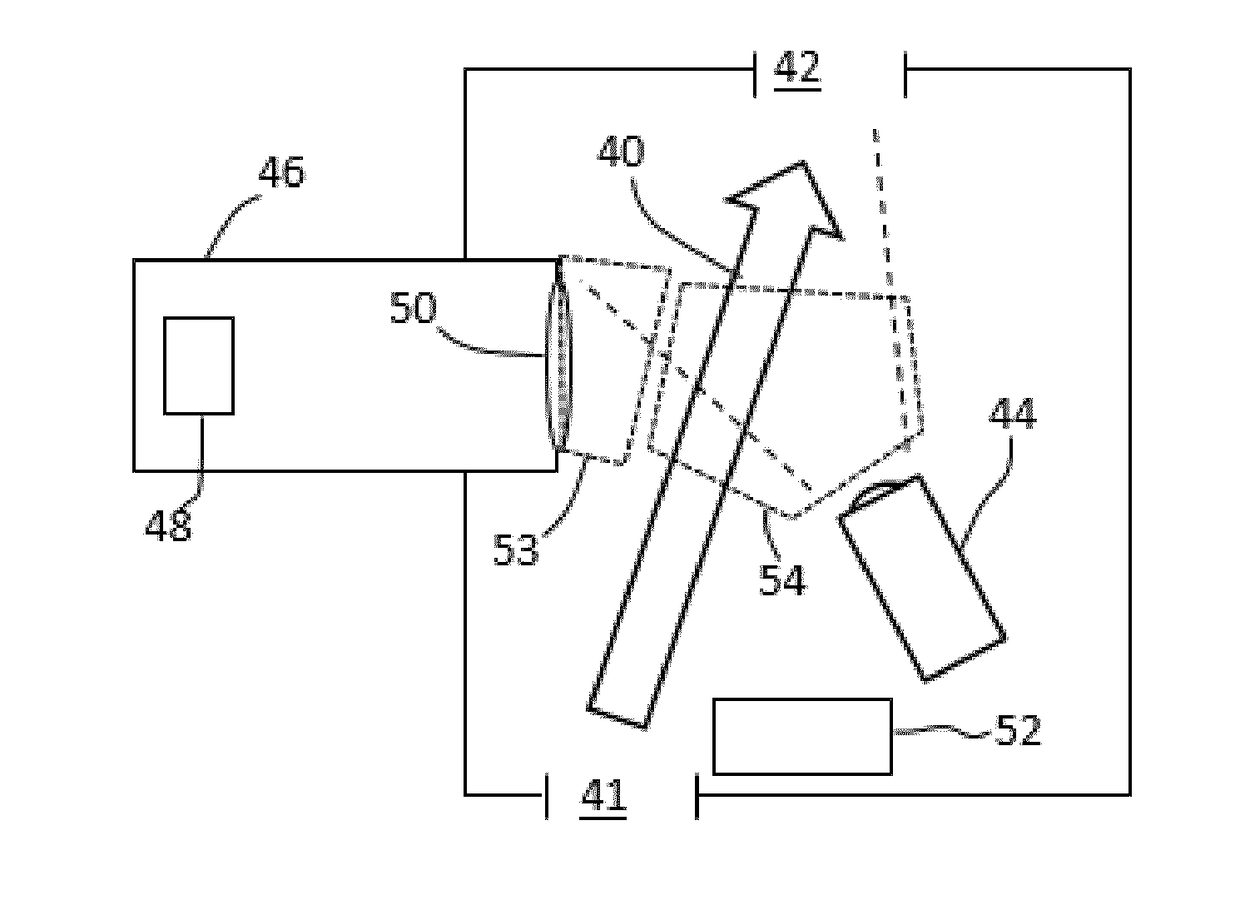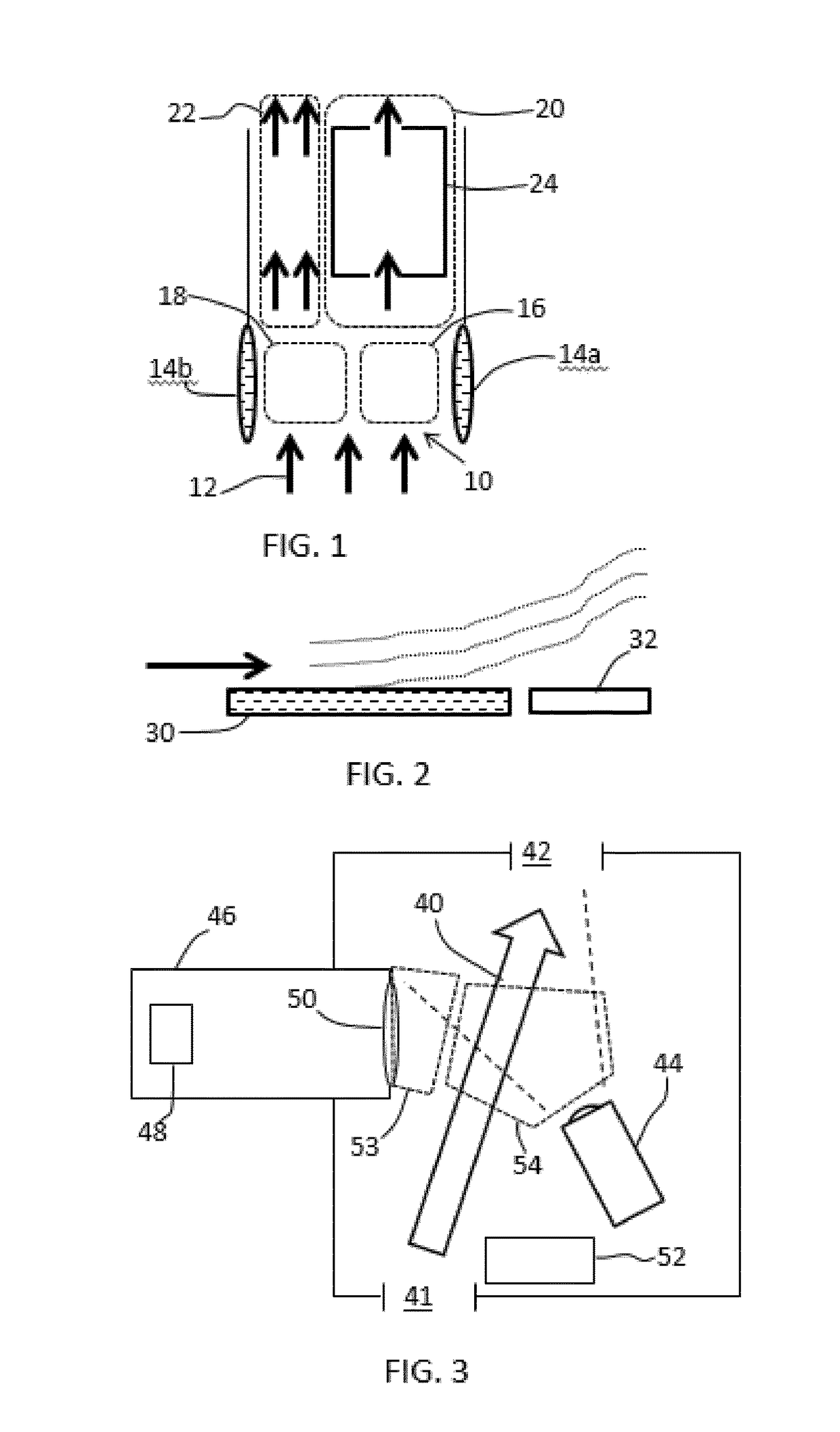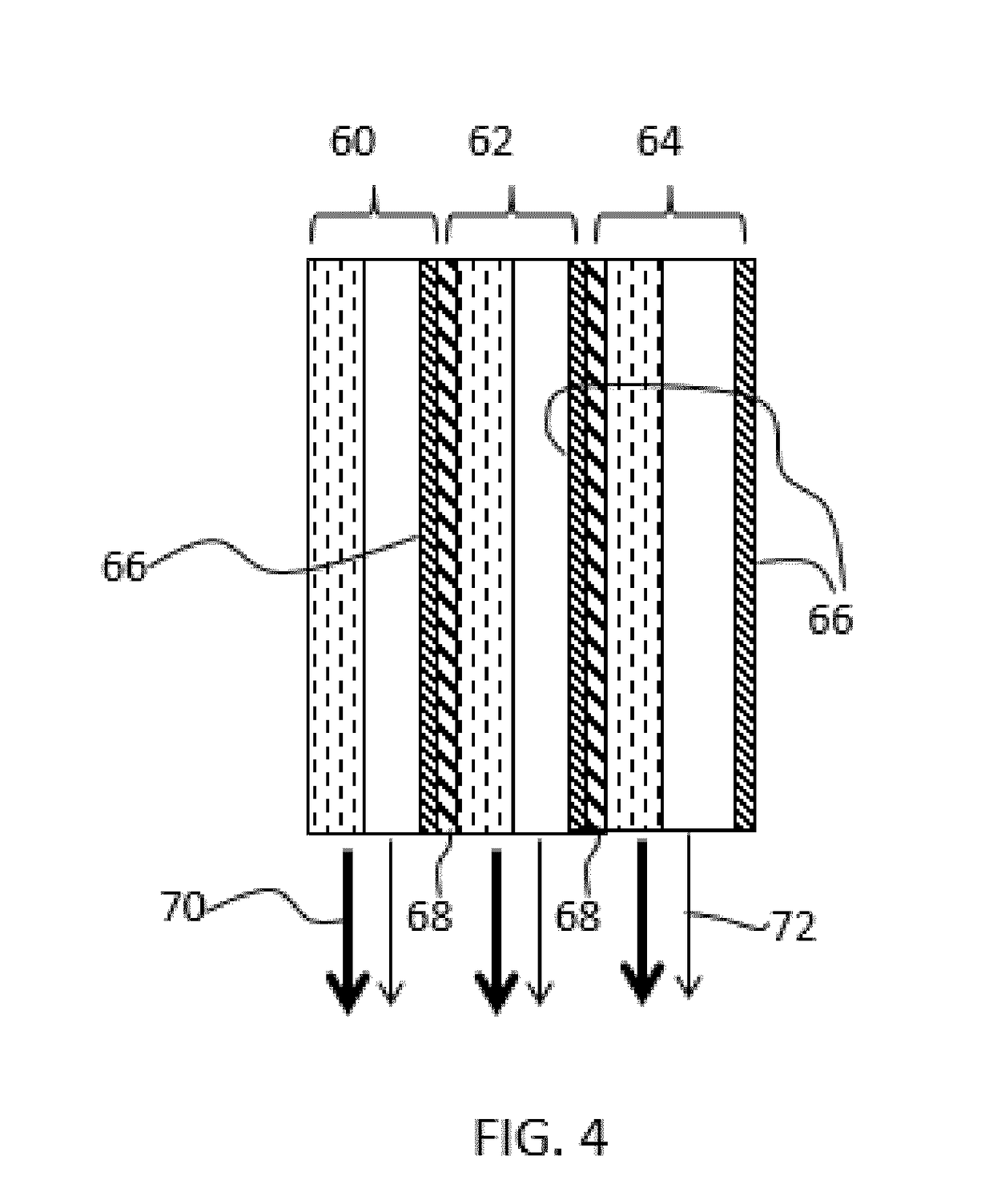Protecting an optical particle sensor from particulate desposits by thermophoresis
a technology of thermophoresis and optical particle sensor, which is applied in the direction of auxillary pretreatment, instruments, separation processes, etc., can solve the problems of affecting the detection accuracy of optical particle sensors
- Summary
- Abstract
- Description
- Claims
- Application Information
AI Technical Summary
Benefits of technology
Problems solved by technology
Method used
Image
Examples
Embodiment Construction
[0049]The invention provides a system comprising a particle sensing component, and a heating arrangement to induce thermophoretic particle movement away from the component. This mechanism may be used in a sensor device which comprises an input flow channel for receiving a gas flow with entrained matter to be sensed. The heating arrangement is used to induce thermophoretic particle movement from a first, warmer, region of the input flow channel to a second, cooler, region of the input flow channel. A sensor comprises the particle sensor component) at or downstream of the first region of the input flow channel. This way, filtering can be performed without the need for a physical filter.
[0050]In this sensor device, thermophoresis is used to move particles from the air path of sensors or key components of such sensors. In doing so, the sensor or specific components thereof can be protected without the need for a physical filter to block particles.
[0051]The force which is induced during ...
PUM
| Property | Measurement | Unit |
|---|---|---|
| diameter | aaaaa | aaaaa |
| concentrations | aaaaa | aaaaa |
| concentrations | aaaaa | aaaaa |
Abstract
Description
Claims
Application Information
 Login to View More
Login to View More - R&D
- Intellectual Property
- Life Sciences
- Materials
- Tech Scout
- Unparalleled Data Quality
- Higher Quality Content
- 60% Fewer Hallucinations
Browse by: Latest US Patents, China's latest patents, Technical Efficacy Thesaurus, Application Domain, Technology Topic, Popular Technical Reports.
© 2025 PatSnap. All rights reserved.Legal|Privacy policy|Modern Slavery Act Transparency Statement|Sitemap|About US| Contact US: help@patsnap.com



